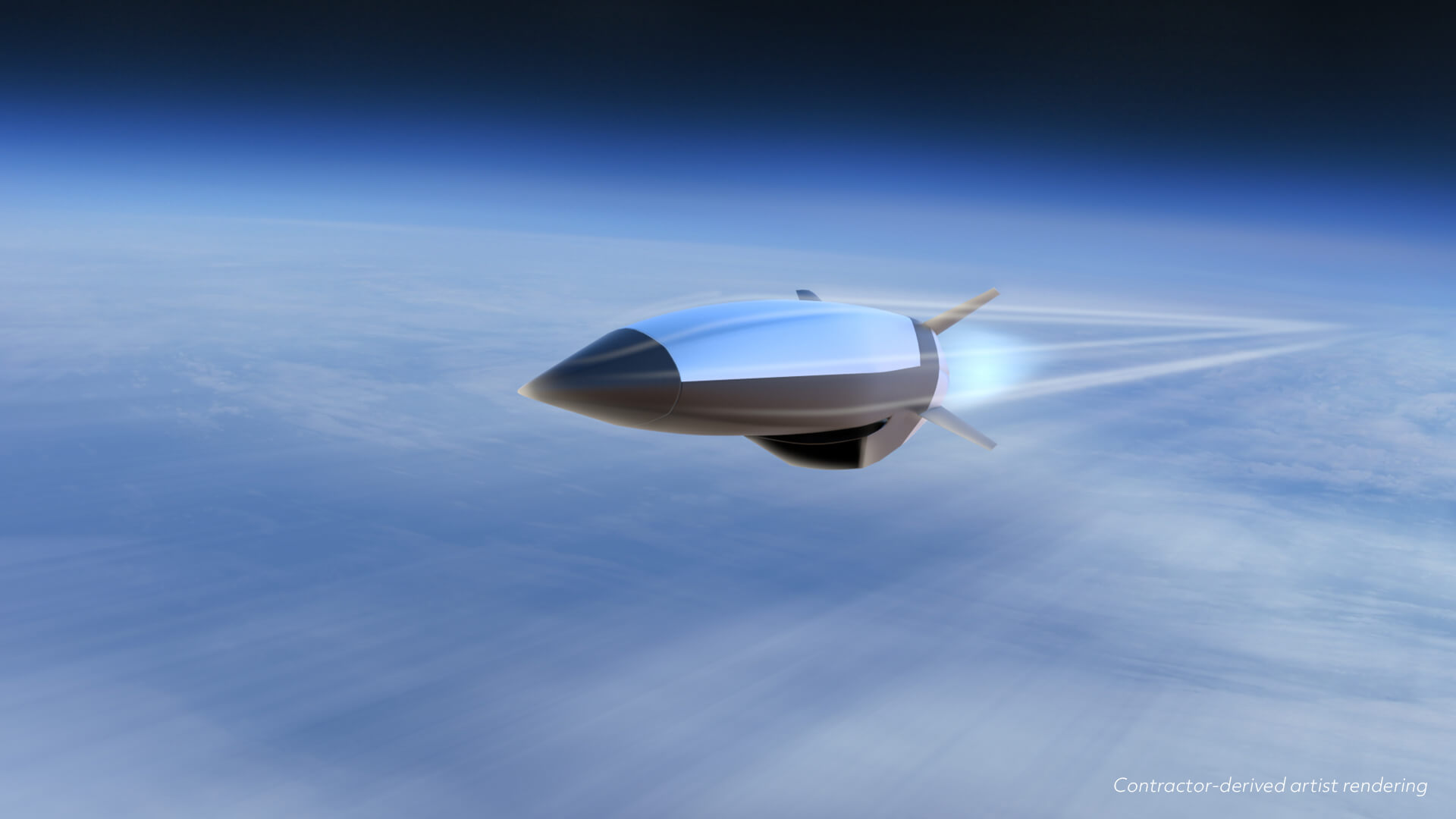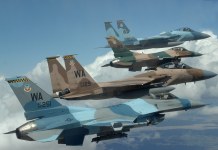The United States (US) military is considering using hypersonic missiles and medium-range ballistic missiles (MRBM) with multiple warheads to strike China and Russia’s Anti-Access/Area-Denial (A2/AD) weapons first by deploying them in the several military bases surrounding the two countries.
Subsonic cruise missiles like the Tomahawk are another option but would only be used in a non-time-constrained mission. Unnamed Japanese officials were quoted as willing to authorize the US plan to base hypersonic and Tomahawk missiles at Kyushu.
The US plan was revealed in a report by the Congressional Budget Office (CBO), which concludes hypersonic missiles are more effective against traditional ballistic missile defense (BMD) interceptors.
Long-range mid-course BMDs have been designed for conventional ballistic missiles that briefly leave the atmosphere and reenter. BMDs cannot defend against ballistic missiles having Multiple Independent Reentry Vehicles (MIRV).
Hypersonic missiles “fly inside the atmosphere, below the altitude where midcourse ballistic missile defenses typically operate,” the CBO study said. These interceptors are originally designed to hit ordinary ballistic missiles in mid-flight outside the atmosphere, as the latter follows a predictable, detectable path.
Hypersonic missiles can also maneuver unpredictably at high speeds to counter short-range defenses, making them harder to track and intercept. After Hypersonic Boost Glide Vehicles (HBGV), MRBMs with MIRVS have the range and speed to strike these A2/AD platforms under time constraints.

Hit A2/AD Launch Sites First
To operate effectively in an adversary’s A2/AD zone (South China Sea or Baltics), the US military might need to strike a small number of targets in under an hour at ranges between 3,000 km to 5,000 km.
Such targets include coastal air-defense systems, long-range strike systems, and over-the-horizon radars of the A2/AD systems.
By striking such launch sites on the Chinese mainland, the US could limit the effects of A2/AD early in a conflict, allowing it to follow up by using a broader arsenal of shorter-range and less survivable weapons.
US military leaders have for the last five years been admitting the disadvantage before Moscow and Beijing’s complex ‘bubbles’ created by their long-range A2/AD missiles, meant to hit the encircling US military from safe ‘standoff’ ranges.
China particularly, possessing the largest and most diverse range of such cruise, anti-ship, and conventional ballistic missiles, bases its doctrine on just hitting US naval and land assets in the first and second island chains comfortably from its home front, with its secondary and tertiary lines of defense unhurt to fight the remaining American forces.
The DF-16 short-range ballistic missile (SRBM) can reach 1000 kilometers, bringing all the first island chain targets within reach. The 1,500-2,000 kilometers range DF-21D ‘carrier killer’ anti-ship ballistic missile (ASBM) can hit the second island chains and any approaching US naval flotilla.
The DF-26 intermediate-range ballistic missile (IRBM) can reach 3,500 kilometers, hitting the most crucial yet farthest US naval base in the western Pacific – Guam. Japan’s Kyushu island can be covered entirely by the DF-17 hypersonic missile, the DF-21D ASBM, the DF-10A subsonic cruise missile, and the DF-100 supersonic cruise missile.

BMDs Triggered Russia & China’s Own Hypersonic Programs
Interestingly, only the US developed a layered BMD shield when it abrogated the 1972 Anti-Ballistic Missile (ABM) Treaty with the Soviet Union in 2002.
Interestingly, this sparked an arms race that triggered Russia and China to develop hypersonic A2/AD missiles to defeat American BMD systems. BMD systems are, therefore, generally considered ineffective by many experts since the adversary has the advantage of finding multiple ways to bypass them.
The CBO itself notes: “Ballistic missiles are also difficult to defend against, particularly if they are equipped with countermeasures to confuse midcourse missile defenses and maneuverable warheads to defeat short-range missile defenses. Only very effective long-range defenses would be likely to threaten ballistic missiles in midcourse; to date, no potential US adversaries have deployed such defenses.”
Destabilizing Region
Three hypersonic missile projects are being implemented in the United States. The USAF has the Air-Launched Rapid Response Weapon (ARRW), the US Army has the Long-Range Hypersonic Weapon (LRHW), and the USN has the Conventional Prompt Strike (CPS). They are believed to have speeds above Mach 5.
The report notes that short-range ballistic defenses might detect hypersonic missiles when the latter descend lower in altitude, lose much of their energy, and possibly become slower in speed than even MIRVs of ballistic missiles.
But because hypersonic missiles keep maneuvering throughout their flight, their target uncertainty is greater than MIRVs.
However, this military-technical advantage has a politico-strategic fallout – other adversary nations can misinterpret the hypersonic missile’s trajectory and assume it is headed toward them. Far-east Asia (Western Pacific) is ripe for such a scenario.
With three US adversaries, North Korea, Russia, and China sharing the same contiguous geography, a hypersonic missile aimed at either one could be misunderstood by the other two as headed toward them.
Except for China, neither Russia nor North Korea has a No-First Use (NFU) nuclear posture. Assuming they adopt a ‘launch on warning’ policy, a retaliatory strike might become a first strike, forcing separate attacks from the US and triggering an unimaginably destructive nuclear exchange.
Former PLA instructor and military affairs commentator Song Zhongping was quoted in the Global Times, warning about this possibility.
Claiming the US’ end goal is to disrupt China’s process of reunification with Taiwan militarily, he added that Japan’s proposed hypersonic launch sites could be easily destroyed due to the inability to move around on the small islands. Only missiles placed on US and Japanese ships will be dangerous.
From the islands, the US hypersonic missiles could be paired and launched together with Tomahawks for various tactical purposes – decoys, baiting Chinese radars, a limited ISR role, etc. Different variants of the Tomahawk subsonic cruise missile have different ranges, with the farthest being around 2000 km.
Thus if deployed in Kyushu, the missile can cover not only the island of Taiwan and the East China Sea (ECS) but also the east coast of the Chinese mainland. This also puts Japan’s plan to develop cruise missiles with changeable multipurpose warheads and purchase Tomahawks right in perspective.
There are, however, immense technological and cost constraints with hypersonic missiles, like the complex metallurgical science in creating high-strength heat-resistant alloys and the astronomical costs of their development.
Hypersonic missiles can cost up to a third more than ballistic missiles of the same range with maneuverable warheads.
- The author can be reached at satamp@gmail.com
- Follow EurAsian Times on Google News




